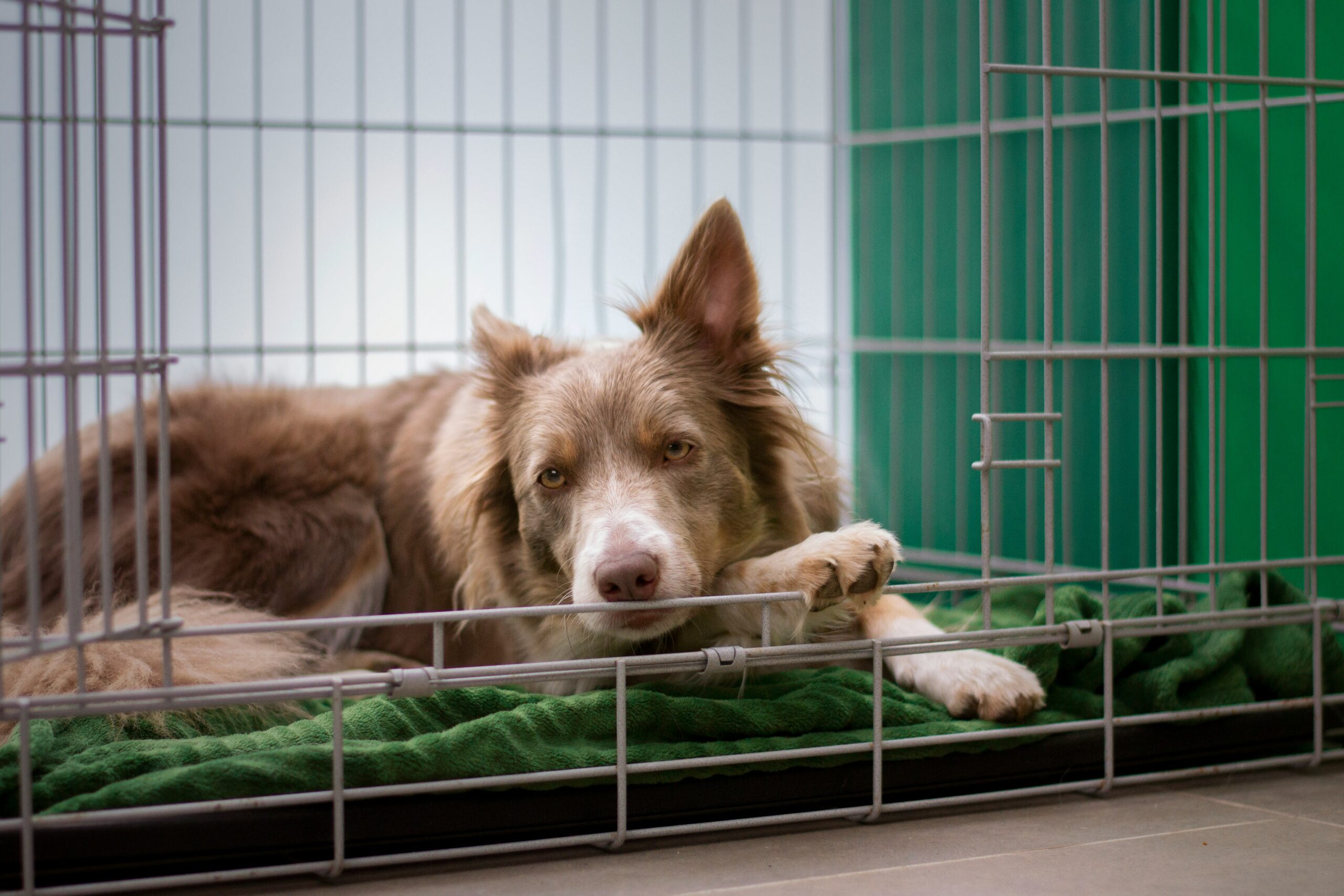Introduction
Crate training is a blessing for many dog owners, as there is more peace for pups when they are inside their safe and snug den, it also minimizes a lot of labor off your shoulders. If you are crate training a new puppy or an adult dog, using a crate can be beneficial when housebreaking, reducing anxiety and giving your pup a den to relax in. Here’s what we’ll go over: Benefits of crate training – How to choose the best dog crate for your puppy Step-by-step instructions on how to get your dog used to their newly selected den.
Why Crate Training is Great
1. Housebreaking
- Speed Up Potty Training: Using a crate, you can expedite the housetraining process by motivating your dog to hold theirs until they go outside. Dogs are not likely to want to soil in the area where they sleep, so proper crate training can encourage bathroom habits.
- Prevent Accidents: If you can not see your dog, it is probably THE BEST way to prevent accidents in the house.
2. Safety and Comfort
- Safe Haven: Provide your furry friend with a safe retreat —a den—where he can relax if you sense that he’s becoming anxious.
- Stop Destructive Behavior: If you crate your dog while gone, it can stop them from chewing furniture or getting into things that aren’t theirs.
3. Easier Travel and Boarding
- Less Stressful Travel: Dogs who are crate-trained feel more at ease during car rides and flights, reducing stress while traveling.
- Smooth Boarding and Vet Visits: Dogs adept in a crate tend to be more relaxed or better behaved when crated during boarding stays and for vet visits, where undergoing crating is often inevitable.
Picking the Perfect Crate
1. Size Matters
- Find the Right Fit: Your dog should have enough room to stand up, turn around and lay down in the crate you choose The space should not be too wide, as it may introduce accidents. Select an adequate size.
- Adjustable Crates: If you are getting a puppy that will grow very large, be sure to get a crate with a divider.
2. Types of Crates
- Wire Crates: Offers better ventilation and visibility, which is why they are used in the home quite often.
- Plastic Crates: Tend to be more enclosed and protective, almost feel like a den, are good for travel.
- Soft-Sided Crates: Lightweight and easy to transport, soft-sided crates can be great for cats, and they’re OK for a very well-behaved small dog that does not chew or attempt to escape.
Step-by-Step Crate Training
1. Introduce the Crate
- Make it Inviting: Position in the high-traffic area of your home and turn into an inviting place by adding a soft bed or blanket. Open the door, and allow your dog to explore at their own speed.
- Positive Associations: Throw a treat in and lure your dog to hop inside with positive associations.
2. Get Them Used to It
- Short Sessions: Begin with small increments when you are nearby As your dog becomes more accustomed to these sessions, slowly increase the time.
- Mealtime in the Crate: If you feed your dog in the crateMealtime in the Crate: Feed your dog their meals inside of the crate, too.
3. Increase Crate Time
- Practice Alone Time: Chained — practice leaving your dog in its crate for short periods of time. Slowly increase the duration.
- Regular Breaks: Take your dog frequently to go potty and exercise regularly.
4. Crate at Night
- Bedtime Routine: Put the crate in or near your bedroom at night to help your dog feel secure. When the dog is acclimated to it, you can gradually move it to its final location.
Tips for Success
- Be Patient and Consistent: Crate training takes time. Make sure you are patient and consistent when it comes to crate training and avoid using the crate as punishment.
- Positive Reinforcement: Positive reinforcement is the best way to teach a puppy, by offering treats or praise, whereas punishment and scolding will only make them fear you.
- Comfort and Safety: Be sure bedding is safe and comfortable, and keep crating time down to the recommended amount.
Common Mistakes to Avoid
- Too Much Crating: Allow your pet some freedom, and do not leave your dog within the crate more extended than it should be. Puppies should be taken out for a potty break often to exercise.
- Negative Associations: Never use the crate as a punishment and it will always be your dog’s happy place.
- Rushing the Process: Move at your dog’s pace. Rushing can cause setbacks.
Conclusion
The crate is a great way to keep your dog safe, happy and give you peace of mind. With the appropriate crate, encouragement and a little patience, you can crate-train your dog. Crate training is beneficial for many reasons, including but not limited to housebreaking, travel and creating a safe space for your furry friend.




